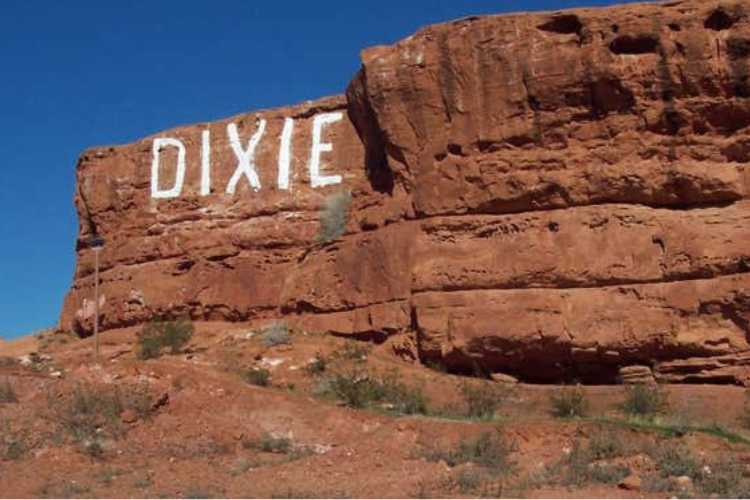

PHYSICAL HEALTH ARTICLES

Humility and Respect for the Past
It was more than thirty-five years ago, but I remember it like yesterday. I was editor of St. George Magazine, a publication I and a couple of partners had willed into existence just three years earlier in the spring of 1983. I was invited to attend a press conference on the campus of Dixie College where a new president was to be named. There had been plenty of talk around town about who the new president would be. I was in on the scuttlebutt, so when the announcement was made that day, I was just as surprised as everyone else who thought they had it pegged. When the chair of the Board of Regents voiced the name Douglas D. Alder, professor of history at Utah State University, a palpable sigh rolled across the room. Not a sigh of disappointment but a natural reaction to the question, “Who is this guy?”
Who the guy was would be answered in wonderful and excellent ways over the next few years, but it took a while, especially for members of the old guard (and by old, I mean old). Of all the questions posed to Doug Alder that morning in 1986, the one I remember came from a St. George native, then in his late eighties, who was a teenager when Dixie College was founded in 1911, a soldier in World War I, and a St. George business and civic leader for the best part of the twentieth century. After Mr. Alder had articulately fielded all the questions from the media, this elderly gentleman stood up and ceremoniously lifted his voice as if speaking for all the founders of Utah’s Dixie. He asked (and I paraphrase after all these years), “Just who on earth do you think you are, coming in here to tell us how to run things?”
I learned quickly who on earth Doug Alder thought he was. He thought he was a very fortunate man to have been considered for this position, which he had not proactively sought. He thought he was someone who, though he had little administrative experience, was willing and excited to help lead that storied school into a new era. And when I introduced myself to him after the press conference, he immediately revealed himself as someone who was not interested in barging into the future without knowing everything he could about the past.
We began a friendship that day based on a mutual love for the history of this area and a desire to know it as deeply as possible. It wasn’t long before Doug Alder’s understanding and analysis of southern Utah’s history had far surpassed mine, and that focus, passion, and daily seeking continued right up to his death at age ninety-one, just a few months ago on November 25, 2023.

What I also soon learned was that, more than anything, President Doug Alder was who he was because of who he married. Elaine Reiser Alder also became an immediate and dear friend, and it wasn’t long before she was writing excellent articles for St. George Magazine and contributing to the community in ways still clearly evident three decades later and in other ways known only to those individuals whose lives she compassionately touched.
It could not have been easy for a professor who had been in the classroom for nearly three decades to take on the role of college president. Doug’s specialty was European history, and as a missionary in Switzerland and Austria, he had become fluent in German. Later, he returned to Vienna to study on a Fulbright scholarship. With little time to think about it, he was plucked out of the classroom, his daily interaction with students, and his rigorous academic and intellectual pursuits and placed in an office where fundraising, endowments, program expansion, and student enrollment were the topics of the day.
He made the transition without abandoning his original calling as a researcher and teacher. In fact, as he successfully led significant increases in fundraising, endowments, programs, and enrollment at Dixie College, he also found time to teach history on campus. His new specialty became the teaching of southern Utah’s history. I had the privilege of working with Doug Alder and Karl Brooks as they co-authored the book A History of Washington County: From Isolation to Destination. Doug put his heart and soul into that book, first published in 1996. He continued to update the history, and I helped publish a second edition in 2007, which added another decade to the area’s story. The last thing Doug told me in our final conversation last September was that he was working on a new update and he wanted to know when we could get it published.
Doug wrote, collaborated on, compiled, and edited many other books key to the area’s history, and he wrote dozens of scholarly articles reflecting his deep study, understanding, and analysis of our history. His high standards as a historian helped me realize that the title of historian is hard earned. Though he was always a champion of my work, I knew I did not fit in that category. Doug was my image of a true historian, and I am a storyteller. I could not tell the stories I do without the historian first doing the heavy lifting.

But Doug also loved the role of storyteller. He could spin a great yarn. He wrote an excellent novel called Sons of Bear Lake. He possessed a passionate sense of place for his beloved Bear Lake, and that caused me to wonder how he was able to become so zealous about and connected to southern Utah. After he retired as president of Dixie College, he and Elaine chose to stay in Utah’s Dixie. Their devotion to the history, the stories of this place, and the relationships they made with so many people had connected them to this landscape in deep and meaningful ways. They have continued to devote themselves to this community in ways that have made them not only wonderful tellers of the story but actual and integral parts of the story itself.
Just one of many examples is how they tirelessly worked to restore the old buildings on 200 North and Main Street. The fact that the pioneer opera house, the Social Hall, and the St. George Art Museum stand today is due, in large part, to the work and dedication of Doug and Elaine Alder. I can’t drive along that street without thinking of them. As this town continues to hurtle into a bigger, brighter, and more complicated future, I hope everyone who moves here will come with a humility and respect for the past like Doug and Elaine did—the kind of humility and respect that leads to a better future.
